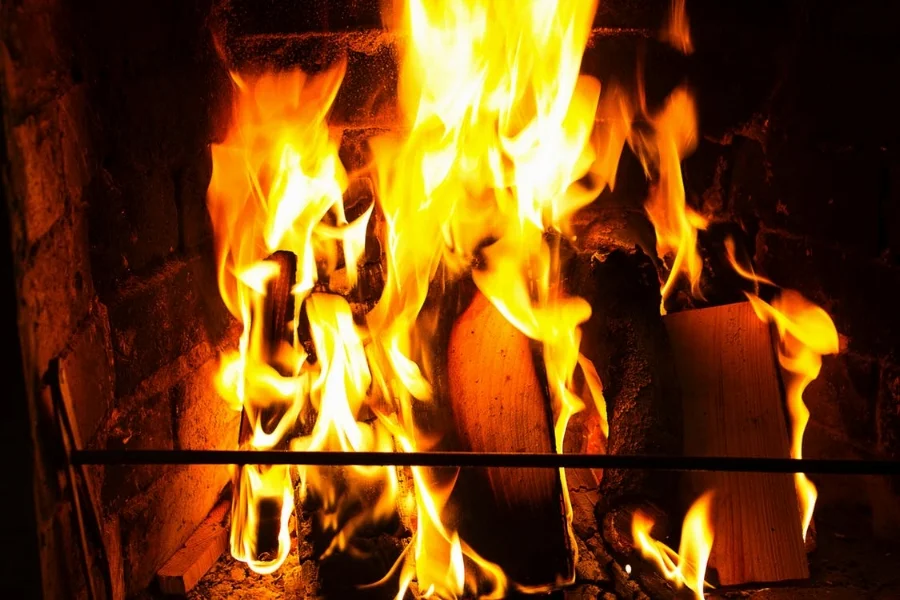How to Make Sure Your Firewood is Green in a good way!
Anyone who has a log burner or open fire will know that the type of wood you burn can make a huge difference in a number of areas.
If the wood is not seasoned enough or kiln dried then it can contain too much moisture and is referred to as being “green”. This may not sound like a bad thing but it is; it can damage your chimney. It is also doesn’t burn as well or as hot and can pop and spark which increases fire risk with open fires.
The actual type of wood itself has an effect. Softer woods do not burn as hot as harder woods so even buying the wrong type of wood can leave you with a very inefficient fire.
But one of the areas most people do not consider is where the wood has come from and what impact that has on the environment.
Stove, Fires and the Environment
Burning wood to create heat is generally considered a carbon neutral process. The tree assimilates carbon through it life time via photosynthesis and the wood is then burned which realises the CO2 back into the atmosphere. However, things are really not that simple.
Is the cycle complete?
The first thing to think of when looking at a wood source is “do they re-plant trees”. The idea here is that the company that sell the wood also plant trees to replace the ones they use. This is a truly sustainable cycle. However, even this cycle has other factors because it take fuel and energy to plant the trees and cut them down and if a lot of machinery is used in this process the carbon offset balance may be tipped the wrong way.
Coppicing and Tree Removal
A lot of wood available is actually from trees that have been removed as part of a cyclic coppicing system or from trees that have been cut down around properties or for other reasons. This may sound less suitable as there is no replanting in this cycle but there is also no energy wasted in planting and maintaining the trees either.
Where Does It Come From?
One of the really big factors that is most often missed when a consumer buys firewood is the location the wood is from and how far it has travelled. With the ever growing number of online buying options for wood there is also a huge growth in wood being brought over from mainland Europe. Is this a bad thing?
If you consider the re planting aspect then no, many of these sources are managed woodland but if you think about the miles the wood has travelled then it is a very bad thing. It is far better to order and buy wood from within a 50 mile radius. This means the fuel and energy used to get the wood to your home is limited. Consider for a second the amount of fuel it would take to move tonnes and tonnes of wood 1500+ miles across Europe and through 2 or 3 different companies; loading and off-loading trucks and more.
Buying wood is not as simple as many fire owners first assume. First the wood needs to be good quality, it needs to be lower than 25% moisture and it needs to be the right type of wood. But it is also critical that the wood comes from a sustainable source and a local one too! The idea of buying wood from tree surgeons and coppicing is fine but it is worth trying to mix up these sources with a supplier that re-plants too.
The real key is to avoid buying what seems like great wood at a great price and ignore the cost to the environment. Using your wood burner to keep warm instead of using gas or electricity is better for the planet but not if the wood has travelled further than you did on your last holiday!
Where Do I Start?
The best place to start when finding a good local supplier is your local Fireplace Showroom. No one will know more about the wood that is on offer in terms of quality, price and even customer service. The odds are they have dealt with a number of the local suppliers and will help you find the right one. There are showrooms in most towns just like www.wakefordfireplaces.com , but you could even just use a website like www.fireplace-finder.co.uk to find your local shop.
If you would rather do your own research then start searching for firewood suppliers in your county, town or village. When you find some, ring them up or e mail and ask about where the wood comes from, how is it seasoned and what sort of wood it is.
Green Wood
There really is a right and a wrong way to buy wood so make sure the wood you are burning is “green” in a good way!
For more information on types of firewood visit www.hetas.co.uk

